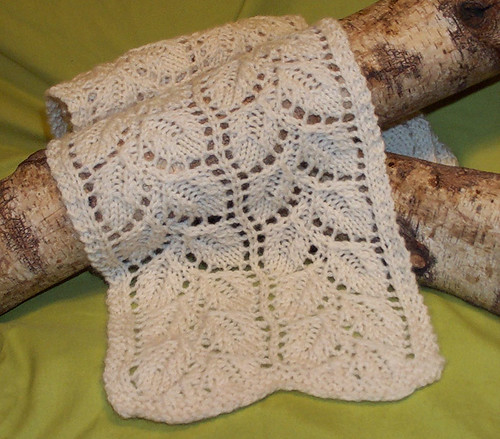




All in all I am very happy with my Liesel scarf. This is the first project I am super proud of. I will post some specs as well as pictures of the finished scarf soon. Also, to my fellow newbie knitters; dive in the deep end. I highly recommend it. Choose a project that seems just a bit too advanced for you and get yourself through it no matter what. I guaranty you will be pleased with the lessons you've learned.

Well, as is my usual way; I improvised. I browsed the light bulb selection at my local Wal-Mart and found that GE makes an Energy Smart Daylight bulb. I figured if this didn't work out I would just put them to use somewhere in the house. I found them to be just the solution I was looking for for several reasons...
All in all I am totally pleased with these bulbs as a knitting lamp. They give clean, bright light and allow me to see true colors while working. They are compact fluorescent bulbs which are available in several wattages so they can also save money on your power bill.
In closing I should state that this tip is not to suggest that the aforementioned GE bulbs are equal to OTT-Lite or similar craft lamps. I have not used another brand of craft lamp, so I really couldn't ascertain similarities in their performance. I have however found this to be a personally suitable solution and the best light by which I have knitted. I merely offer this as a suggestion for persons such as myself who find the price and availability of such lamps prohibitive.
